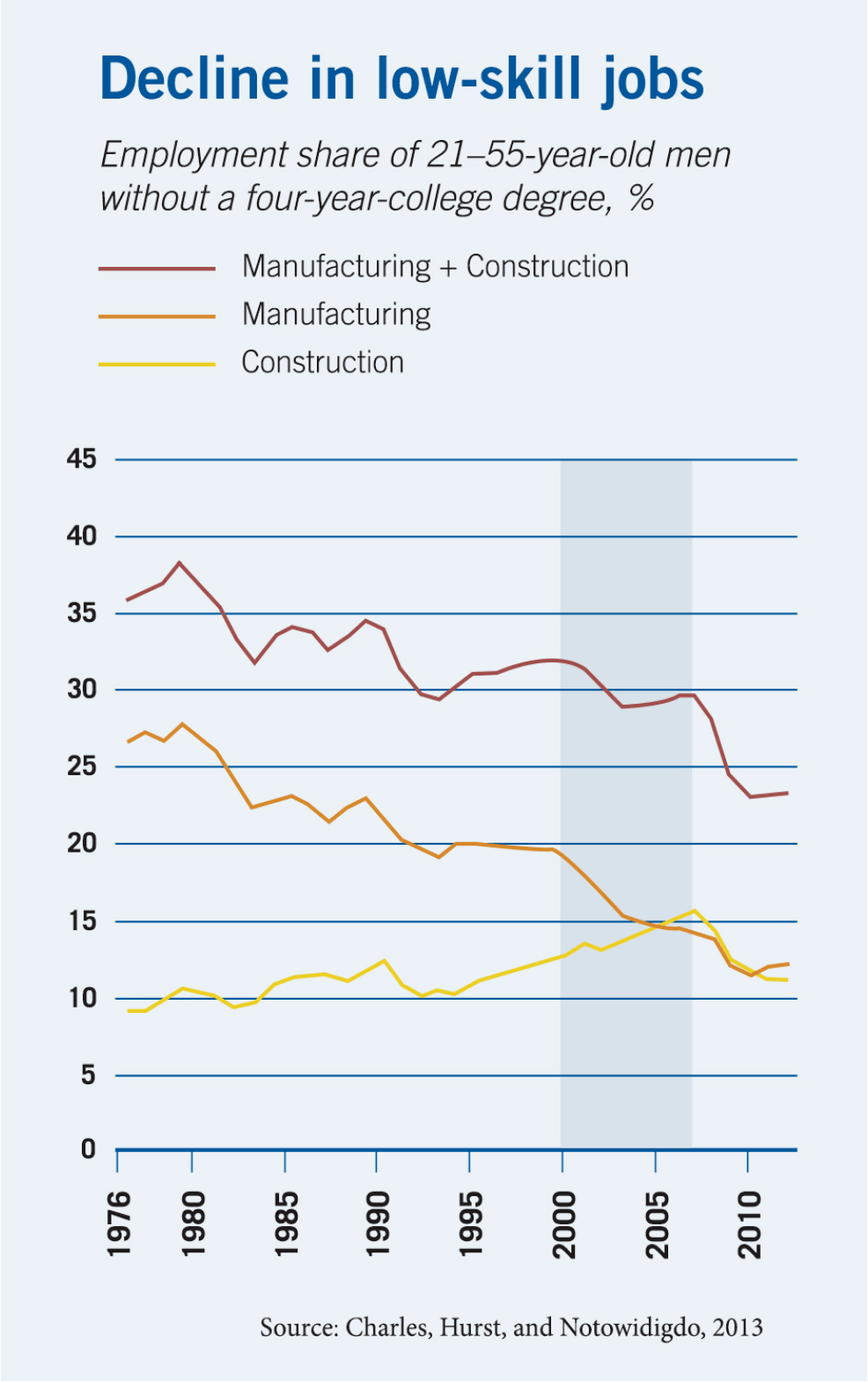
We’ve Been Underestimating Discrimination
New methods of measuring racism and sexism find a larger, systemic impact.
We’ve Been Underestimating DiscriminationHow the housing boom masked a weak job market
The economic downturn exposed a secular, decades-old downward trend in manufacturing employment

Research suggests that housing contributed little to the aggregate increase in nonemployment in the 2000s, while manufacturing contributed about 40%.
Kerwin Kofi Charles, Erik Hurst, and Matthew J. Notowidigdo, “Manufacturing Decline, Housing Booms, and Non- Employment,” Working paper, April 2013.

New methods of measuring racism and sexism find a larger, systemic impact.
We’ve Been Underestimating Discrimination
Economist Amy Finkelstein offers her solutions for the problems plaguing the US healthcare system.
Capitalisn’t: Rebooting American Health Care
Booth’s Raghuram G. Rajan and Martin Wolf of the Financial Times discuss the pressures faced by democratic systems.
How Can We Restore Trust in Democracy?Your Privacy
We want to demonstrate our commitment to your privacy. Please review Chicago Booth's privacy notice, which provides information explaining how and why we collect particular information when you visit our website.